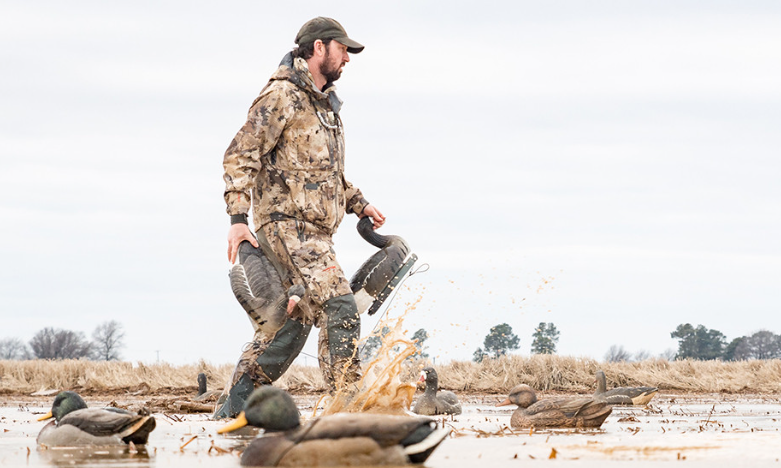Four Steps To Increase Rifle Marksmanship
Story and photographs by Tom Claycomb III
Who wouldn’t like to own a nice custom-made $3,000 rifle? Unfortunately, most people have a budget, but if you can’t afford one, don’t slit your wrist quite yet. If you already own a decent rifle, there are four things you can do that will improve its accuracy, and these are not going to be earth-shattering concepts or new revelations. I’m constantly surprised at how many people don’t do these simple steps. Just remember an old proverb: The simple things confound the wise.

Check your optic
Are your mounts tight? Is your scope mounted properly? Is your scope tight? If not, you’ll hit all over the board.

The next thing to think about in this category is whether or not the scope is actually functional. You tend to get what you pay for in optics; however, regardless of scope quality ensure that it is at least functioning within the parameters of the value. I’m careful with my scopes. I don’t throw them in the back of my pickup truck or strap them onto my four wheeler. This type of activity can be detrimental to the internal components of a scope. Any scope.
DEAD FOOT ARMS
These are all basic things you should check just on the optic, but before you take a sledge hammer to a seemingly dysfunctional scope, let’s check three more items.
Shooter Stability

You may not always have a good rifle rest while hunting, but it’s imperative that you are stable when sighting in your rifle. I sight in on a steady table while using a Caldwell Lead Sled, a shooting rest used to brace the rifle, and it assists in recoil reduction. You don’t want 20 different factors affecting your shot, so you need to weed out the variables. At this point, we are just trying to determine what your rifle is capable of, not the shooter. If you don’t have a CLS, then sand bags can work great as well, or if you’re on a really tight budget, use pillows or blankets.
Out in the field I prefer a Harris bipod. I like the bigger one with the three-adjustment extendable legs, which go from 13½ to 29 inches. Hunting out on the prairie laying down is difficult because the sagebrush and grasses will block your field of vision. In a pinch you can carry two dowel rods taped together 6 inches from the end to use as a bipod to see over these obstacles.
The Rifle’s Trigger
To prove the importance of a good trigger I want you to try this: Make sure your rifle is unloaded and lay it on some pads. Make sure the safety is on, and go through the motions of
actually taking a shot. You will often notice that you start pulling off to one side. That’s what happens if you have a subpar trigger. An example would be an 8-pound trigger with a lot of  creep and rough spots.
creep and rough spots.
If you can really concentrate, you can overcome these pitfalls, but it takes total concentration on every shot. Why put yourself through that? If you’re so focused on pulling evenly, by the time it actually fires
you’ll need to gasp for air. It just takes too much concentration, and even then you won’t be able to totally overcome it.

The other day I went out to shoot my DPMS Bull 20. The trigger was horrible, and it was really windy outside. I focused really hard and got a 1½-inch group at 100 yards, and figured that was about all it was capable of. Then I ran down to Rise Armament in Broken Arrow, Okla., toured their factory and headed out on a coyote hunt. While there, Chris Barger, president of Rise Armament, threw one of their RA-535 Advanced Performance triggers in my DPMS. The RA is a 3.5-pound trigger with no creep. As I alluded to before, my original trigger rated somewhere between horrible and the worst trigger ever. I have buddies who like light triggers, but a 3½-pound pull is about right for me in
hunting conditions.
When I shot my DPMS again, from the same rest using the same Hornady match ammunition, I was able to obtain a three-shot, one-hole group. I was amazed! I can’t overstress the importance of a good trigger.
Ammunition Choice
My hardcore reloading buddies will start wailing and gnashing their teeth, not to mention calling me a heretic, but reloading is not as critical as it was 50 years ago. Granted, you might have to test out four or five different manufacturers and different grains of bullets to find which one shoots best in your rifle, but you should be able to find something that will help maximize your accuracy. To shorten the learning process and save yourself from overshopping, call the manufacturer of your gun to see which bullet they say works best in your rifle. Usually, I just talk to my friends at Hornady and tell them what rifle, caliber, and twist rate I have. They are the professionals!
After determining what shoots best in your specific rifle, sight it in using your chosen ammuntion. Sure, you may switch around if you’re varmint hunting one day and big-game hunting the next, but sight it in every time you switch bullets.
Don’t assume that a 40-grain bullet will probably shoot 2 inches higher than a 55-grainer. That would make sense though, wouldn’t it? I thought so too. I not only shot 2 to 3 inches inches lower, but also 3 inches to the left. So don’t shoot multiple brands and grains of bullets and expect to have any degree of consistency.
I promise that if you employ these suggestions, you should start getting tighter groups. AmSJ











